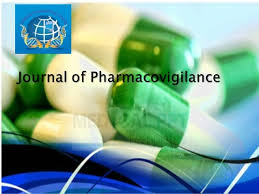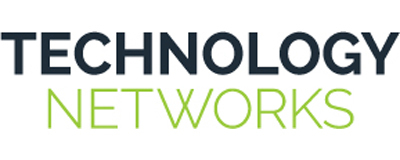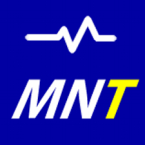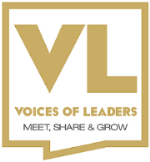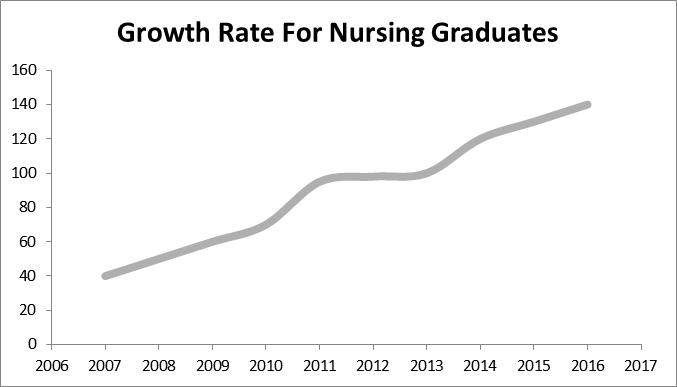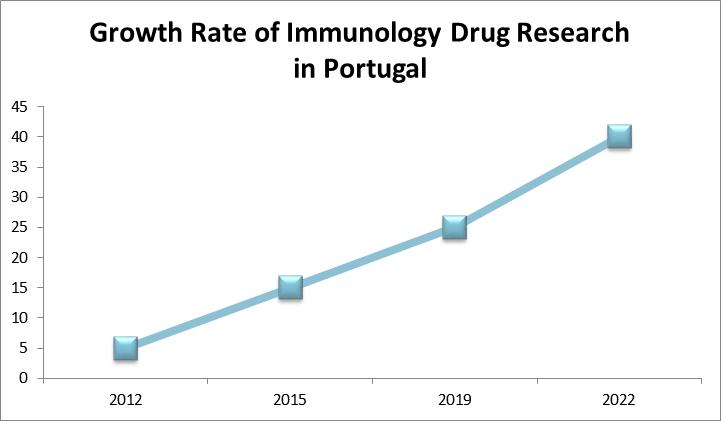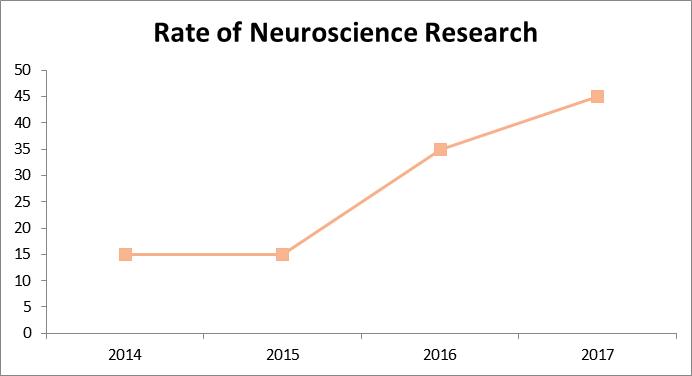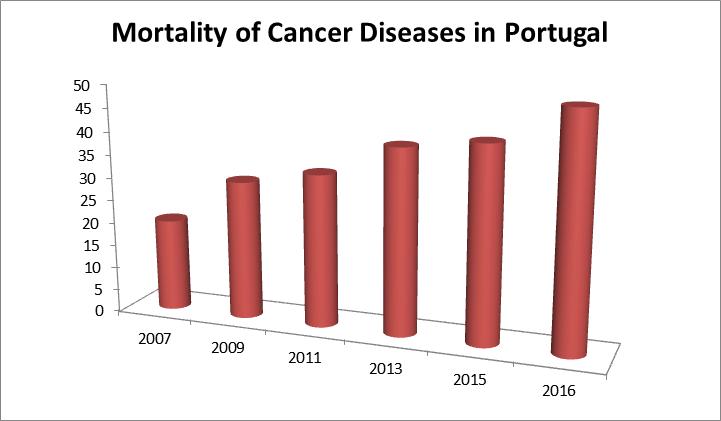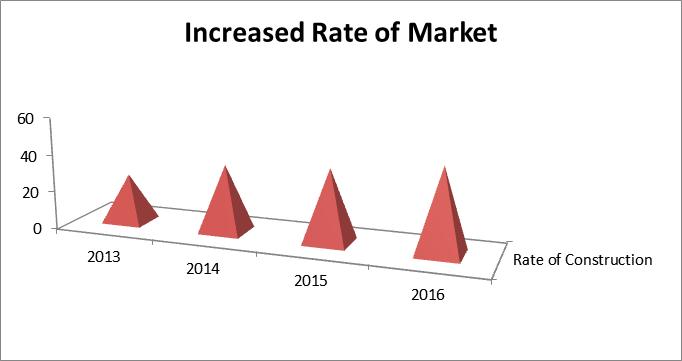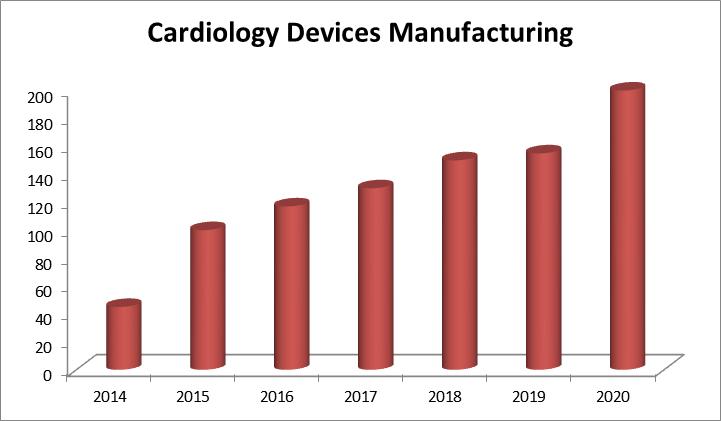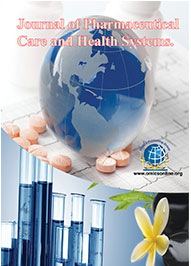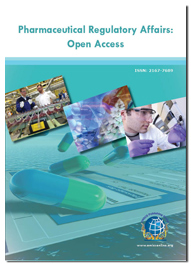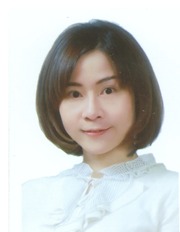Theme: Developing New Formulations and Efficacious Products
African Pharma 2016
On behalf of African Pharma 2016 pharmaceutical events organizing committee, we invite pharmacists, researchers, professors, scientific communities, delegates, students, business professionals and executives to attend the “African Pharma Congress” which is going to be held during June 20-22 2016 at Cape town, South Africa.
In the light of this theme, the conference series aims to provide a forum for international researchers from various areas of pharmacy like chemical processing, industrial practice, analytical methods and pharmacological actions by providing a platform for critical analysis of new data, and to share latest cutting-edge research findings and results about all aspects of Pharmacy.
The present pharma conference will be a multidisciplinary gathering which presents major areas such as formulation and drug delivery, pharmacological actions, analytical techniques and phytochemistry. The forum of Scientists, students and researchers from all corners of the globe, come together to discuss future scope. Each session of the meeting will be included with expert lectures, poster and discussions, join us to inculcate innovative ideas for the development of novel drug design with desired mechanism of action.
The value of Africa’s pharmaceutical industry rose from $4.7 billion in 2003 to $20.8 billion in 2013. By 2016 pharmaceutical spending on the continent is expected to reach $30 billion, driven by a 10.6% annual growth rate that is second only to Asia and in line with Latin America, reported IMS data. By 2020 the market will have more than doubled from current levels to $45-billion. Although it is likely to remain a niche market, the promise of Africa is that it will continue to grow in the next decade as Asia and Latin America start to reach maturity. Africa’s GDP—$2.4 trillion in 2013, and expected to climb to $3.3 trillion by 2020—is already on a par with Russia’s. Africa’s healthcare spending rose from $28.4 billion in 2000 to $117 billion in 2012. Over the same period, its per capita expenditure almost tripled, from $41 to $112.
Conferenceseries organizes 1000+ Global events every year across the globe with support from 1000+ more scientific societies and Publishes 700 Open access journals which contains over 50000 eminent personalities, reputed scientists as editorial board members.
Track 1: Basic Pharmaceutics and its applications
The books containing the standards for drugs and other related substances are known as pharmacopoeias and formularies - collectively these books are known as the drug compendia. The effectiveness of a pharmaceutical design depends on its form and route of administration; therefore it is important to understand the various forms in which drugs are dispensed. Basic Physical Pharmacy provides a thorough yet accessible overview of the principles of bio physical analysis and their application in drug formulation and administration. This definitive guide to physical pharmacy covers all types of pharmaceuticals, from traditional forms and dosage forms to nanotechnology-based novel dosage design.
Related conferences of Basic Pharmaceutics and its applications:
International Conference and Expo on Biopharmaceutics September 21-22, 2015 Baltimore, MD, USA; 8th International Conference and Exhibition on Pharmaceutics and Novel Drug Delivery Systems March 07-09, 2016 Madrid, Spain; Asia Pacific Drug Formulation and Bioavailability Congress June 06-08, 2016 Beijing, China; 2nd International Conference and Expo on Drug Discovery and Designing October 24-26, 2016 Istanbul, Turkey; Pharmaceutical Summit and Expo October 08-10, 2015 New Delhi, India; 5th International conference on Pharmaceutical Sciences Dubai, U.A.E on August 10-11, 2016; 18th International Conference on Pharmaceutical Sciences and Pharmacology Paris, France January 21 - 22, 2016; 18th International Conference on Pharmaceutical sciences and Biopharmaceutics
Track 2: Advancements in Pharmaceutical Technology
A drug dissolution test is an in vitro analytical test used for assessing expected drug delivery characteristics of pharmaceutical products in humans, in particular, of solid oral dosage forms, such as tablets and capsules. The percent of dose entering the systemic circulation after administration of a given dosage form. More explicitly, the ratio of the amount of drug “absorbed” from a test formulation to the amount “absorbed” after administration of a standard formulation. Frequently, the “standard formulation” used in assessing bioavailability is the aqueous solution of the drug, given intravenously. If two medicines are bioequivalent there is no clinically significant difference in their bioavailability. Although bioequivalence is most commonly discussed in relation to generic medicines, it is important to note that bioequivalence studies are also performed for innovator medicines in some situations.
Related conferences of Advancements in Pharmaceutical Technology:
International pharma conferences Conference and Expo on Biopharmaceutics September 21-22, 2015 Baltimore, MD, USA; 8th International Conference and Exhibition on Pharmaceutics and Novel Drug Delivery Systems March 07-09, 2016 Madrid, Spain; Asia Pacific Drug Formulation and Bioavailability Congress June 06-08, 2016 Beijing, China; 2nd International Conference and Expo on Drug Discovery and Designing October 24-26, 2016 Istanbul, Turkey; Pharmaceutical Summit and Expo October 08-10, 2015 New Delhi, India; 5th International conference on Pharmaceutical Sciences Dubai, U.A.E on August 10-11, 2016; 18th International Conference on Pharmaceutical Sciences and Pharmacology Paris, France January 21 - 22, 2016; 18th International Conference on Pharmaceutical sciences and Biopharmaceutics
Track 3: Industrial and Pharmacy Practice
The main areas of research and teaching are on the catalyst and process development, mechanical and thermal unit operations and process of chemical reaction engineering design in various dosage forms. The Chemical Technology enables efficient production of basic, intermediate and end products. Between 1970 and 1980, the energy requirements for chemical reactions with the same production volume were reduced by about 40% through improvements of chemical processes in a chemical industry. Plant location meaning - the establishment of an industry at a particular place. Moore, a very well-known name in the business world, explained layout of an industry as, “The plan of or the act of planning, an optimum arrangement of facilities, including personnel, operating equipment, storage space, materials handling equipment and all other supporting services along with the design of the best structure to accommodate these facilities”
Related conferences of Industrial and Pharmacy Practice:
3rd International Conference on Clinical Pharmacy December 07-09, 2015 Atlanta, USA; International Conference on Pharma Marketing November 17-19, 2016 Alicante, Spain; International Conference on Pharmaceutical Chemistry August 04-06, 2016 Frankfurt, Germany; 7th Annual Global Pharma Summit June 20-22, 2016 New Orleans, USA; 4th International Conference on Clinical Pharmacy Oct 31 - Nov 01, 2016 Las Vegas, USA; ICIP 2016: International Conference on Industrial Pharmacy Jan 21-22, 2016, France; 5th international conference on pharmaceutical sciences August 10-11, 2016, Dubai, U.A.E; Pharma; 2nd National Pharmacy Conference 21 - 24 October 2016, Durban; 7th European congress of pharmacology 26-30 June 2016, Turkey; 18th International Conference on Pharmaceutical Industry Paris, France July 25 - 26, 2016
Track 4: Pharmaceutical Assaying
Titration is one of the analytical method used to determine the unknown concentration of a reactant. This is a delicate procedure that requires patience and good observation skills. Usually, an indicator is used in titration to determine the endpoint of the reaction. Once the endpoint volume is found, mathematics can be used to determine the concentration of the unknown. This procedure is commonly used in the field of analytical method of analysis. In polarography, the electric potential (i.e. voltage) of a growing mercury drop in an electrolyte containing an electro active species is varied as a function of time and the resulting current due to the electrochemical reaction is measured. Polarography is a method employing the measurement of absorbance of a reaction mixture. It is the simplest method used and is employed by a large number of instruments such as a colorimeter, semi auto analyser, auto analyser. Common chromatographic techniques are column chromatography, HPLC, gas chromatography, thin layer chromatography and so on.
Related conferences of Pharmaceutical Assaying:
International Conference and Expo on Biopharmaceutics September 21-22, 2015 Baltimore, MD, USA; 8th International Conference and Exhibition on Pharmaceutics and Novel Drug Delivery Systems March 07-09, 2016 Madrid, Spain; Asia Pacific Drug Formulation and Bioavailability Congress June 06-08, 2016 Beijing, China; 2nd International Conference and Expo on Drug Discovery and Designing October 24-26, 2016 Istanbul, Turkey; Pharmaceutical events Summit and Expo October 08-10, 2015 New Delhi, India; 5th International conference on Pharmaceutical Sciences Dubai, U.A.E on August 10-11, 2016; 18th International Conference on Pharmaceutical Sciences and Pharmacology Paris, France January 21 - 22, 2016; 18th International Conference on Pharma Analytical and Biopharmaceutics
Track 5: Preview of Pharmaceutical Chemistry
Biochemistry is the science, which deals with the chemical constituents of living cells, and with the reaction and processes, they undergo. Biochemistry, also sometimes called biological chemistry, is the study of chemical processes in living organisms, including, but not limited to, living matter, organic molecules. The laws of biochemistry govern all living organisms and living processes. By controlling information flow through biochemical signalling and the flow of chemical energy through metabolism, biochemical processes give rise to the complexity of life. Limit test is defined as quantitative analysis or semi quantitative test designed to identify and control small quantities of impurity which is likely to be present in the substance. IR spectroscopy is a spectroscopic technique to identify chemical compounds and to investigate sample composition.
Related conferences of Purview of Pharmaceutical Chemistry:
International Conference on Clinical Chemistry and Laboratory Medicine May 02-03, 2016 Chicago, USA; International Conference and Exhibition on Cheminformatics and System Chemistry July 14-15, 2016 Brisbane, Australia; 3rd World Congress on Petrochemistry and Chemical Engineering November 30-December 02, 2015 Atlanta, USA; International Conference on Pharmaceutical Chemistry August 04-06, 2016 Frankfurt, Germany; 3rd International Conference on Past and Present Research Systems of Green Chemistry September 19-21, 2016 Las Vegas, USA; Molecular approach to Current Advances in Chemistry’ 7- 8 Dec 2015 KOCHI, India; 1st International Conference on Applied Chemistry 14 -17 Mar 2016, Luxor, Egypt; Boron Chemistry Conference 2015 21 -24 Sep 2015, Toledo, Spain;
Track 6: Pharmacological Vitality of Drugs
Pharmacology is a medical science that forms a backbone of the medical profession as drugs form the corner stone of therapy in human diseases. Therefore, it is of utmost importance to describe the pharmacological basis of therapeutics in order to maximize the benefits and minimize the risks of drugs to recipients. This lecture note on pharmacology is primarily a note for undergraduate health science students such as health officer, nursing, midwifery and laboratory technology students. However, other health professionals whose career involves drug therapy or related aspects should also find much of the material relevant. The goal is to empower the practitioner through an understanding of the fundamental scientific principles of structure activity relationships in pharmacology. The effects of prototypical drugs on physiological and pathophysiological processes are clearly explained to promote understanding on adverse drug reactions. Other related drugs are touched briefly. The selection of the drugs is based on the national drugs list for Ethiopia and on the accumulated experience of teaching pharmacology to many health profession students.
Related conferences of Pharmacological Vitality of Drugs:
3rd World Congress on Pharmacology August 08-10, 2016 Birmingham, UK; 2nd International Conference and Exhibition on Pharmacology and Ethnopharmacology May 02-04, 2016 Chicago, USA; ; 8th International Conference and Exhibition on Pharmaceutics and Novel Drug Delivery Systems March 07-09, 2016 Madrid, Spain; Asia Pacific Drug Formulation and Bioavailability Congress June 06-08, 2016 Beijing, China; 2nd International Conference and Expo on Drug Discovery and Designing October 24-26, 2016 Istanbul, Turkey; Pharmaceutical Summit and Expo October 08-10, 2015 New Delhi, India; 5th International conference on Pharmaceutical Sciences Dubai, U.A.E on August 10-11, 2016; 18th International Conference on Pharmaceutical Sciences and Pharmacology Paris, France January 21 - 22, 2016; 18th International Conference on Pharmaceutical sciences and Biopharmaceutics
Track 7: Human Physiology and Healthcare
Anatomy is the study of the internal and external structures of plants, animals or, for our focus, the human body. The human body is an amazing and complex structure that can perform an almost limitless number of tasks. Physiology focuses on the function and vital processes of the various structures making up the human body. These physiologic processes include muscle contraction, our sense of smell and sight, how we breathe, and so on and reduce drug interactions. Metabolism refers to all of the chemical operations going on within our bodies. Metabolism requires various nutrients or fuel to function and produces waste products much like a car consumes petrol for power and produces waste, or exhaust. Metabolism, for now, can be thought of as ‘all the life-sustaining reactions within the body’. Pathology deals with the study of infectious diseases.
Related conferences of Human Physiology and Healthcare
3rd Indo-Global Summit & Expo on Healthcare October 05-07, 2015 New Delhi, India; 4th Global Summit on Healthcare November 09-11, 2015 Dubai, UAE; 8th Indo Global summit and Expo on Vaccines, Therapeutics & Healthcare November 02-04, 2015 HICC, Hyderabad, India; 4th International Conference on Nursing & Healthcare October 05-07, 2015 San Francisco, USA ; Annual Congress & Medicare Expo on Primary Healthcare April 25-27, 2016 Dubai_UAE ; ICIP 2016: International Conference on Industrial Pharmacy Jan 21-22, 2016, France; 5th international conference on pharmaceutical sciences August 10-11, 2016, Dubai, U.A.E; Pharma; 2nd National Pharmacy Conference 21 - 24 October 2016, Durban; 7th European congress of pharmacology 26-30 June 2016, Turkey; 18th International Conference on Pharmaceutical Industry Paris, France July 25 - 26, 2016
Track 8: Medicinal Inception of Drugs involving Phytochemistry
Phytochemistry or plant chemistry is an interdisciplinary department between natural products chemistry, botany and pharmacy, which deals with biochemistry, isolation, investigation, characterization, microscopy and structure elucidation of plant constituents (phytochemicals) and plant dyes and, inter alia, the usefulness of these compounds considered in terms of medical applications. The phytochemicals present in plants are responsible for preventing disease and promoting health have been studied extensively to establish their efficacy and to understand the underlying mechanism of their action. Such studies have included identification and isolation of the chemical components, establishment of their biological potency both by in vitro and in vivo studies in experimental animals and through epidemiological and clinical-case control studies in man. Adulterations spoil the crude drugs.
Related conferences of Medicinal Inception of Drugs involving Phytochemistry:
3rd International pharma conferences Conference and Exhibition on Pharmacognosy, Phytochemistry and Natural Products October 26-28, 2015 Hyderabad, India; International Conference and Exhibition on Marine Drugs and Natural Products July 28-30, 2016 Melbourne, Australia; Global Summit on Herbals and Natural Remedies October 26-27, 2015 Chicago, USA; Global Summit on Plant Science September 21-23, 2015 San Antonio, USA; 3rd International Conference and Exhibition on Pharmacognosy, Phytochemistry and Natural Products October 26-28, 2015 Hyderabad, India 18th International Conference on Pharmacognosy, Phytochemistry and Natural Products Istanbul, Turkey November 28 - 29, 2016; 9th Joint Natural Products Conference July 24-27, 2016 Denmark; the 2nd Conference on Ethnomedicine and Traditional Medicine June 1 - 3, 2016 Nanjing, China; 18th International Conference on Pharmacognosy, Phytochemistry and Natural Products Istanbul, Turkey November 28 - 29, 2016; 9th Joint Natural Products Conference July 24-27, 2016 Denmark
Track 9: Principles and Regulations in Pharmacovigilance
Pharmacovigilance involves the collection of data on Adverse Reactions which must then be analysed and evaluated to create meaningful safety information. The process of signalling involves looking at the adverse reaction data for patterns that suggest new safety information. This content provides a brief introduction to the definition and purpose of signals and some of the key methodologies employed to generate them by validation. Healthcare professionals are encouraged to report adverse reactions via national spontaneous reporting systems. Consumers and patients may also report adverse reactions in this way as well as via a wide variety of media, including the internet. Relevant information may also be made available from other soures, such as poisons centres. All steps taken and recommendations made must be accurately tracked and documented at every stage to assure quality control. There are resulting legal obligations which must be fulfilled in an accurate and timely manner but the ultimate goal is to confirm or refute whether there is some new issue with the safety of a medicine so that action might then be taken to reduce the risk by following good manufacturing practices.
Related conferences of Principles and Regulations in Pharmacovigilance
3rd International Conference on Clinical Pharmacy December 07-09, 2015 Atlanta, USA; International Conference on Pharma Marketing November 17-19, 2016 Alicante, Spain; International Conference on Pharmaceutical Chemistry August 04-06, 2016 Frankfurt, Germany; 7th Annual Global Pharma Summit June 20-22, 2016 New Orleans, USA; 4th International Conference on Clinical Pharmacy Oct 31 - Nov 01, 2016 Las Vegas, USA; ICIP 2016: International Conference on Industrial Pharmacy Jan 21-22, 2016, France; 5th international conference on pharmaceutical sciences August 10-11, 2016, Dubai, U.A.E; Pharma; 2nd National Pharmacy Conference 21 - 24 October 2016, Durban; 7th European congress of pharmacology 26-30 June 2016, Turkey; 18th International Conference on Pharmaceutical Industry Paris, France July 25 - 26, 2016(pharmaceutical events)
Track 10: Pharmaceutical Microbiology and Biotechnology
Applied Microbiology and Biotechnology focusses on prokaryotic or eukaryotic cells, relevant enzymes and proteins; applied genetics and molecular biotechnology; genomics and proteomics; applied microbial and cell physiology; environmental biotechnology; process and products, fermentation products and more. The journal welcomes full-length papers and mini-reviews of new and emerging products, processes and technologies. Disinfection and sterilization are essential for ensuring that medical and surgical instruments do not transmit infectious pathogens to patients. Because sterilization of all patient-care items is not necessary, health-care policies must identify, primarily on the basis of the items’ intended use, whether cleaning, disinfection, or sterilization is indicated. Genetics is the science of heredity study of what genes are, how they carry info, how they are replicated, passed along, and how expression of the info determines characteristics of the organism.
Related conferences of Pharmaceutical Microbiology and Biotechnology:
6th World Congress on Biotechnology October 05-07, 2015 Crowne Plaza, New Delhi, India; 12th Biotechnology Congress November 14-15, 2016 San Francisco, USA; 4th International Conference on Clinical Microbiology and Microbial Genomics October 05-07, 2015 Philadelphia, USA; International Conference on Food Microbiology August 08-10, 2016 Birmingham, UK; 2nd World Congress and Expo on Applied Microbiology October 31-November 02, 2016 Istanbul, Turkey; 5th Annual Pharmaceutical Microbiology 20–21 January 2016 London, United Kingdom; 3rd International Conference on Biotechnology and Bioinformatics 5-7 February 2016 India
Track 11: Pharmaceutical Equipment and Instrumentation
Instruments involve conception, design, construction, and operation of research facilities and manufacturing plants, where they also are involved in the conception, design, scale-up, manufacturing, and labelling and packaging processes, exchangers in the conversion of chemical and biological materials into valuable pharmaceuticals and pharmaceutical therapies and transportation of fluids. They have to implement FDA regulations, validation assurance (VA), quality control, and maintain Good Manufacturing Practices (GMP) compliant facilities. In addition to the safety of the end product, they have to maintain a level of personal and environmental safety. Parameter extraction is an important part of model development.
Related conferences of Pharmaceutical Equipment and Instrumentation:
pharma conferences on3rd World Congress on Pharmacology August 08-10, 2016 Birmingham, UK; 2nd International Conference and Exhibition on Pharmacology and Ethnopharmacology May 02-04, 2016 Chicago, USA; ; 8th International Conference and Exhibition on Pharmaceutics and Novel Drug Delivery Systems March 07-09, 2016 Madrid, Spain; Asia Pacific Drug Formulation and Bioavailability Congress June 06-08, 2016 Beijing, China; 2nd International Conference and Expo on Drug Discovery and Designing October 24-26, 2016 Istanbul, Turkey; Pharmaceutical event Summit and Expo October 08-10, 2015 New Delhi, India; 5th International conference on Pharmaceutical Sciences Dubai, U.A.E on August 10-11, 2016; 18th International Conference on Pharmaceutical Sciences and Pharmacology Paris, France January 21 - 22, 2016; 18th International Conference on Pharmaceutical sciences and Biopharmaceutics
Track 12: Axioms in Production
The primary objective of the Bill is to amend the Drugs Misuse Act 1986 (DMA) and the Drugs Misuse Regulation 1987 (DMR) specifically with regard to the classification of a range of drugs. The Bill aims to recognize the dynamic nature of the drug industry by extending the definition of dangerous drug and creating new offences for the supply and production of precursor substances and items. The drug legislation also aims to assist law enforcement authorities by prescribing a system of preparing and filing end-user declarations for transactions of controlled substances or specific things. Hospital Pharmacy makes a common man to learn about the drug usage. Effective drug store management is required.
Related conferences of Axioms in Production:
3rd World Congress on Pharmacology August 08-10, 2016 Birmingham, UK; 2nd International Conference and Exhibition on Pharmacology and Ethnopharmacology May 02-04, 2016 Chicago, USA; ; 8th International Conference and Exhibition on Pharmaceutics and Novel Drug Delivery Systems March 07-09, 2016 Madrid, Spain; Asia Pacific Drug Formulation and Bioavailability Congress June 06-08, 2016 Beijing, China; 2nd International Conference and Expo on Drug Discovery and Designing October 24-26, 2016 Istanbul, Turkey; Pharmaceutical Summit and Expo October 08-10, 2015 New Delhi, India; 5th International conference on Pharmaceutical Sciences Dubai, U.A.E on August 10-11, 2016; 18th International Conference on Pharmaceutical Sciences and Pharmacology Paris, France January 21 - 22, 2016; 18th International Conference on Pharmaceutical sciences and Biopharmaceutics
The Pharma Industry is responsible for the development, production and marketing of medicines. According to IMS Health Consulting, an international research company, in 2012 the size of the world pharmaceutical market reached $940 billion. In monetary terms it grew by 6%. In the future the sector is expected to grow at no less than 3% to 4% a year and if this happens the global Pharmaceutical Market is expected to reach $1.1 trillion by 2015 and will reach $1.2 trillion in a pair of 2016 and up to $1.5 trillion by 2020. The global demographic, epidemiological and economic changes are transforming the Pharmaceutical Market. The world population is growing rapidly and is projected to rise from 7 billion in 2011 to 7.7 billion in 2020 and 9.6 billion in 2050, hence a rise within the demand for pharmaceuticals. The world Pharmaceutical Market is worth US$300 billion a year, a figure expected to rise to US$400 billion within three years. Economically, the south africa is well positioned to be the one in every ofnext growth engine of global Pharmaceutical Business many countries in the region enjoy robust economic growth and the highest cash reserves per capita in the world. The Pharmaceutical Market is consequently flourishing as the increasing middle class demands higher care, and government healthcare disbursement continues to grow. The Pharmaceutical Market in the republic of south africa is probably going to grow by between 10 and 15 % annually over the next three years, outstripping more mature markets, forecasts a report from URCH Publishing. The African Pharma company are showing consistent growth over the last years in particular in the space of specialised medication. The market for Pharmaceutical product is still expected to grow in many countries across the region.
Target Audience
- Researchers in development of New Medicine
- Health Professionals
- Business Development Professionals
- Consultants and Pharma Service Provider
- Pharmacists
- Professors and Students From Academia
- Graduates and Postgraduates etc..
Why it's in Cape Town, South Africa:
Cape Town ranks third among the foremost urban areas in South Africa, after Johhanesberg, and has roughly the similar population as the Durban Metropolitan Area. It’s also the provincial capital and primate city of the Western cape.
As the seat of the National Parliament it’s additionally the legislative capital of the country. It forms part of the City of cape town metropolitian municipality. The city is famous for its horbour, for its natural setting in the Cape Floristic Region, as well as for such well-known landmarks as Table Mountain and Cape Purpose. As of 2014 it’s the 10th most populous city in Africa and residential to 64% of the Western Cape's population. It’s one among the foremostism cities in the world, reflecting its role as a major destination for immigrants and expatraites to South Africa. The city was named the World Design Capital for 2014 by the International Council of Societies Industrial Design. In 2014, Cape Town was named the best place in the world to visit by both The New York Times and also the telegraph
Why to attend???
With members from around the world focused on learning about Pharma, Pharmaceutics and Pharmaceutical technology; this is your single best opportunity to reach the largest assemblage of participants. Conduct demonstrations, distribute information, meet with current and potential customers, make a splash with a new product line, and receive name recognition at this 3-day event. World-renowned speakers, the most recent techniques, tactics, and the newest updates in fields are hallmarks of this conference.
Market of Spending on medicines
Past spending growth offers few clues to the level of growth to expect through 2015 – Unprecedented dynamics square measure are at play — including historically high levels of patent expiry, rapid expansion of demand for medicines within the world's fastest growing economies, fewer new medicines reaching patients, and additional moderate uptake of these that do become available – These dynamics are driving rapid shifts within the mixture of spending between branded merchendise and generics; and between spending in the major developed countries and those 17 high growth emerging countries referred to as 'pharmerging‘.
- Spending on medicines which was estimated at $856bn in 2010, is expected to achieve nearly $1,100bn in 2015, reflecting a slowing growth rate of 36% over the five year period compared to 6.2 % annual growth over the past five years
- A distinct shift is additionally expected within the market shares across the world, with the US and Europe share of global spending declining
- Meanwhile, 17 high growth emerging markets (pharmerging) as well as China, India, Brazil, Russia and Mexico will contribute 28% of total spending by 2015, up from only 12 per cent in 2005
Global Pharma Market Growth
· According to IMS Health Consulting, an global research company, in 2012 the dimensions of the global pharmaceutical market reached $940 billion. In financial terms it grew by 6%. In the future the sector is expected to grow at no less than 3% to 4% a year and if this happens the world pharmaceutical market is expected to achieve $1.1 trillion by 2015 and will reach $1.2 trillion in 2016 and up to $1.5 trillion by 2020. The global demographic, epidemiological and economic changes are transforming the pharmaceutical market. The world population is growing rapidly and is projected to rise from seven billion in 2011 to 7.7 billion in 2020 and 9.6 billion in 2050, hence an increase in the demand for pharmaceuticals.
· Sending on medicines can reach nearly $1,100Bn in 2015, reflecting a slowing growth rate of 3-6% over the five year period compared to 6.2% annual growth over the past five years. Absolute global disbursal growth is anticipated to be $210-240Bn, compared to $251Bn since m2005.The U.S. share of global spending will decline from 41% in 2005 to 31% in 2015, while the share of spending from the top 5 European countries will decline from 20% to 13% over the same period. Meanwhile, 17 high growth emerging markets led by China, can contribute 28% of total spending by 2015, up from only 12% in 2005.The next five years will also see associate innursing accelerating shift in spending toward generics, rising to 39% of paying in 2015, up from 20% in 2005.
African Pharma Market Growth
. Big Pharma's latest frontier is Africa! Yes, drugmakers have been active on the continent for years, primarily in fighting infectious diseases. But like other markets with an emerging middle class, Africa is seeing an increase in chronic disease--and that puts more Africans in line for prescription drugs.
As Reuters reports, the African pharma market is expected to grow to $45 billion by 2020. Its growth rate--10.6% annually--matches up with Latin America's. As growth in the more established emerging markets slows down, Africa's could still be going strong.
"We're thinking hard about what happens when those emerging starts to slow because they are not going to continue growing at the rate that they're growing forever--and a place where we're putting a lot of our attention is Africa," Novartis ($NVS) CEO Joe Nimzees told Reuters
Importance and scope of Pharma Industry
The pharmaceutical trade represents one among the foremost dynamic and demanding industries within the world. As health care continues to grow and account for a big portion of the economy in the United States and throughout the world, the importance of the pharmaceutical and health care trade increases.
Over the years pharmacy has mature within the variety of prescribed drugs sciences through analysis and development processes. It is related to product yet services.
|
|
Discovered and developed area unit its merchandise and therefore the tendingit provides comes beneath the class of services
Pharmacy involves all the stages that are unit related to the drugs i.e. discovery, development, action, safety, formulation, use, quality control, packaging, storage, marketing, etc. This profession features a large socio-economic relevance to the Indian economy. In India this sector is among the longer term economy drivers. It’s committed to deliver top quality drugs and formulations at an inexpensive worth, so that majority of individual can afford them.
This profession features a socio-economic relevance to the Indian economy. The transformation of the arena from conventional pharmacy to drug experts, which is each desired and necessary to succed in the global standards, has already created commendable progress
Major Associations In South Africa
. National Association Of Pharmaceutical Manufactures
. Pharmaceutical Industry Association Of South Africa
. Pharmaceutical Societies Of South Africa
. National Community PHrmacist Associations
. Vending Association Of South Africa
. South Africa Medical Association
. Medical Association Of South Korolin
. Nova South Eastern University
Conference Highlights
- Basic Pharmacy and its applications
- Advancements in Pharmaceutical Technology
- Industrial and Pharmacy Practice
- Pharmaceutical Assaying
- Preview of Pharmaceutical Chemistry
- Pharmacological Vitality of Drugs
- Human Physiology and Pharma Healthcare
- Medicinal Inception of Drugs involving Phytochemical Pharmacy
- Principles and Regulations in Pharmacovigilance
- Pharmaceutical Microbiology and Biotechnology
- Pharmaceutical Equipment and Instrumentation
- Axioms in pharmacy Production
To share your views and research, please click here to register for the Conference.
To Collaborate Scientific Professionals around the World
| Conference Date | June 20-21, 2016 | ||
| Sponsors & Exhibitors |
|
||
| Speaker Opportunity Closed | Day 1 | Day 2 | |
| Poster Opportunity Closed | Click Here to View | ||
Useful Links
Special Issues
All accepted abstracts will be published in respective Our International Journals.
- Journal of Pharmaceutical Care & Health Systems
- Journal of Drug Metabolism & Toxicology
- Pharmaceutical Regulatory Affairs: Open Access
Abstracts will be provided with Digital Object Identifier by

